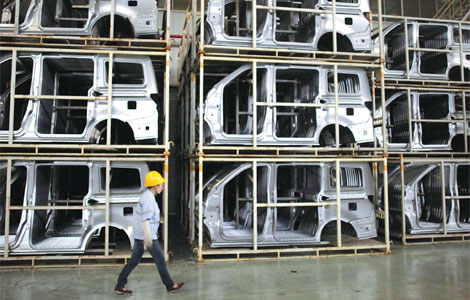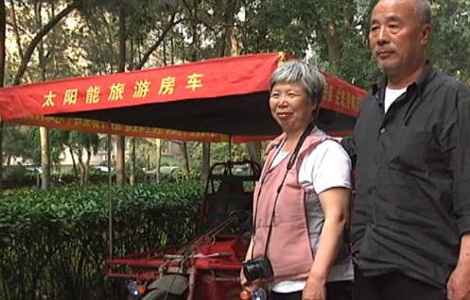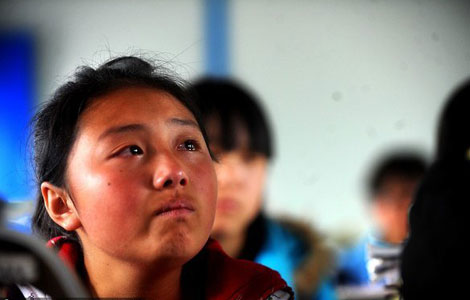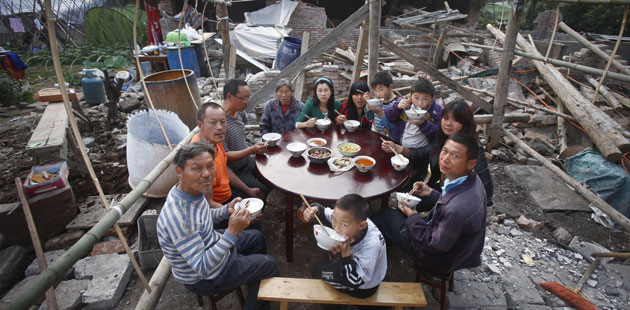The gamble that is Abenomics
Updated: 2013-06-07 08:13
By Xu Changwen (China Daily)
|
|||||||||||
Besides, the fiscal health of Japan has worsened. In 2012, Japan's budget deficit was 214 percent of GDP, the worst among the 31 OECD member countries. And it is expected to grow as the country increases its financial expenditure, which again could cause the yen to depreciate further.
Japan used to maintain a good balance of payments. But its international payment surplus has fallen rapidly since the 2008 financial crisis. In 2012, its trade surplus of current account ($4.7 trillion) was only one-fourth that of 2011. The trend is likely to continue, making Abenomics a gamble, the failure of which would trap Japan in the muddy pool of currency depreciation and recession.
Moreover, the three arrows are not an original concept, for many developed countries have tried out similar ideas. For example, after the 2008 financial crisis, the US Federal Reserve introduced three rounds of quantitative easing by lowering interest rates, stimulating the economy with $787 billion and taking measures to deal with bad bank loans to facilitate economic growth.
In the 1990s, Japan itself took measures to cut costs and lay off many workers to deal with its economic downturn. But since its action was confined to the fiscal and financial sectors, it could not solve the root problem. Not until 2002, when former prime minister Junichiro Koizumi introduced fiscal, financial and economic reforms, could Japan remove the biggest structural obstacles, such as bad bank loans, to economic growth. Experience shows that only structural reform can facilitate economic growth.
On Wednesday Abe finally shot the third arrow of his growth strategy by pledging to raise incomes by 3 percent annually and set up special economic zones to attract foreign businesses in order to boost economy. He also proposed to mobilize women in the workforce, boost private business and deregulate some sectors.
However, the third arrow will hit the target only if Abe can devise detailed policies and implement them, among which the economic structure reforms are the most difficult.
Abe has no choice but to shoot the third arrow, because Japanese bond, stock and currency markets have seen extreme volatility of late. Experts attribute the shockwave to the absence of a sound economic growth strategy.
Abe has to take more prescriptions in the third arrow, such as reforming the employment system to encourage labor flow, stimulating domestic investment to boost domestic demand, increasing rural and agricultural incomes, making trade more liberal and raising the contribution of free trade areas to the total trade volume from 19 to 70 percent by 2018.
These measures may have a radiant appeal to them and may cover almost all the problems Japan faces - from deflation and the outcome of Japan's entry into the Trans-Pacific Partnership to trade frictions and farmers' protests - but we have to wait to see whether they will be successful.
The author is a researcher at the Chinese Academy of International Trade and Economic Cooperation, affiliated to the Ministry of Commerce.
Related Stories
A weak currency for Japan is not the full answer 2013-06-04 18:48
Japan disaster money spent on counting turtles 2013-06-04 09:25
More volatility under Abenomics 2013-06-03 11:37
Too early to judge Abenomics' effect 2013-05-23 05:31
'Abenomics' may not cure Japan 2013-04-03 07:15
Today's Top News
China's economy might be No 1 in 2030
355,000 parents have lost only children
Russian President Putin, wife announce divorce
Xi: Strengthen trade links with Mexico
Top global enterprises welcomed
Gold miners held in Ghana
China, Vietnam set up naval hotline
More students looking overseas
Hot Topics
Lunar probe , China growth forecasts, Emission rules get tougher, China seen through 'colored lens', International board,
Editor's Picks

|

|

|

|

|

|





